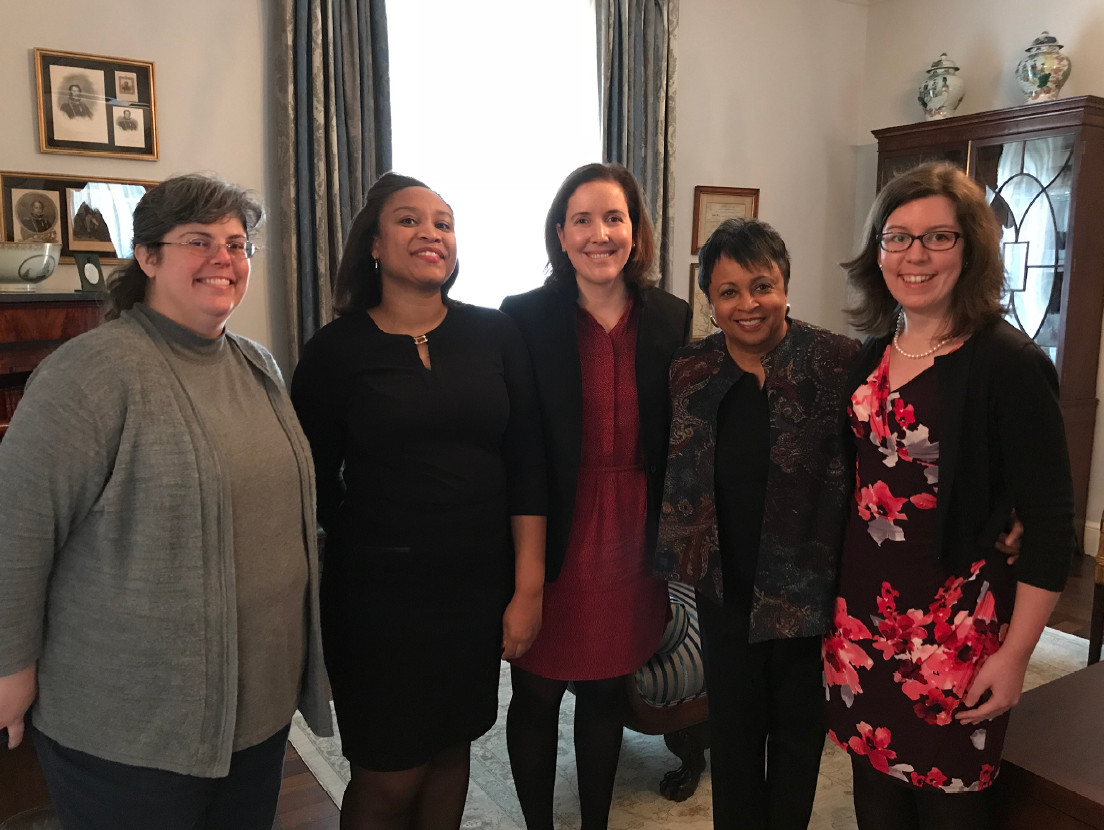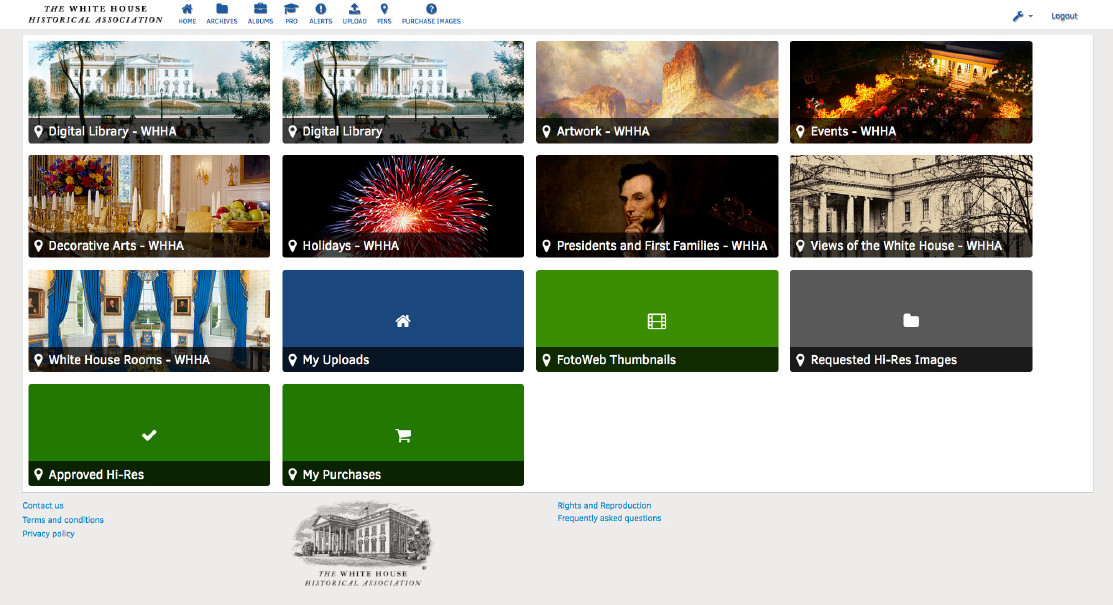The White House Historical Association was founded in 1962 to support the National Parks Servce in the preservation of the Executive Mansion. Part of the WHHA's mission is to educate the public with regards to the history of the White House. From 1962 through the mid-1980s, the WHHA worked with photographers from National Geographic Society to take pictures of major events and day-to-day life in the White House. Those images were preserved on 35mm slide film, and the slides were placed in cold stoarge, remaining there for more than two decades until the launch of the new WHHA Digital Library in 2016 created an opportunity.
In the early 2000s WHHA switched to digital photography, generating roughly 7TB of image files containing nearly 300,000 discrete files that were stored on extrernal drives and thus unsearchable. These born-digital materials were in need of a preservation plan just as much as the physical slides.
When the Library team was formed in 2015, a single database of image metadata, which had been custom-coded in 1994, was the only search tool available. The database was so old it only functioned on a single, aging computer. It only included image data that had been entered by staff and interns over the years, which produced inconsistent results. The database consisted solely of text and low-resolution images, and no preservation support was provided. All of the WHHA's legacy images of the history of the White House from 1962 until 2015 were scattered with no organisation, no access and no consistent backups.
The Library team advocated heavily for a holistic approach to preserving the entirity of the WHHA's legacy collections all at once, regardless of origins, following best practices available and leveraging new technological innovations. The evolution of digital asset management systems (DAM) and the relative low cost of cloud computing technology were selected as the best approach for a small, private non-profit with no on-site IT staff.

Step one was getting the slides digitized in their entirity and, thanks to an agreement between WHHA and Amazon Web Services signed in late 2016, the large-scale digitization project was begun in March 2017. Working with AWS partner Digital Divide Data and their local affiliate, Creekside Digital in Glenn Arm Maryland, WHHA delivered more than 20,000 slides in two batches beginning in summer 2017. Not only were the physical slides at risk for degradition given their age, many had never been scanned before and they were kept in industrial freezers in a warehouse, not even accessible to the WHHA staff. The Library team approached their long-term preservation as a way to ensure public access to these unique snapshots of daily presedential life in perpetuity, and to protect the physical assets by creating digital copies. The second half of the slides were digitized in 2018, with the final delivery arriving in June 2018 while the librarians continue to process the images and add them to the Digital Library.

At the same time, the Library team ingested the 7TB of digital photographs into the Fotoware DAM software that runs the Digital Library using an Amazon Snowball in April 2017. Working with Amazon Web Services again, the team employed Amazon Rekognition, a facial recognition software that runs in the cloud, in 2018 to process the legacy digital backlog and identify images of historic value to help process the nearly 300,000 files in this group. Those images are also being processed and added to the Digital Library. This same Rekognition technology is being used on the digitized slide images for a similar purpose.
To ensure long-term accessibility of all these images, regardless of whether they were born-digital or not, WHHA has set up an Amazon Glacier instance, which is the cloud equivalent of cold storage. Glacier is a low-cost, limited access form of cloud storage that offers multiple levels of encryption protection and regular data integrity checks to comply with best practices for digital preservation. Both camera-raw versions and archival TIFF files are being kept in Glacier, which is one of the most secure long-term digital storage options available. Should a freezer stop working, or a single external hard drive fail, WHHA will no longer be at risk of losing its unique collection of images of life in the White House during the last half of the 20th century.
Because the WHHA does not have a reading room where users can come in and conduct research, the Digital Library is our locus of public outreach and access to our collections. We understand the need to guarantee our materials can be accessible by anyone at anytime and that we are gifted with a unique record of events in one of the most famous buildings in the world, which we have an obligation to protect and preserve. The lack of previous structure to information management at the Association provided an opportunity for the library team to start essentially from scratch and to leverage major new developments in cloud computing, facial and object recognition technologies, and rely on established best practices for digital preservation to create a coordinated plan to protect all of the WHHA's legacy of images of life in the White House, going back to our foundng in 1962, for future generations to discover and enjoy.






























































































































